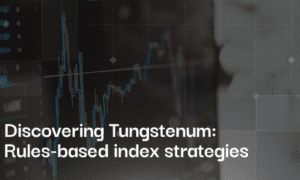From the Internet of Things (IoT) to artificial intelligence (AI), technological advancements are revolutionizing how people live and work. However, they also bring with them a pressing concern—cybersecurity.
As users embrace these exciting technologies, they must also find a delicate balance between innovation and risk management to protect digital assets.
Keep reading to learn about emerging cybersecurity tech and how to balance innovation with potential risk.
The Cybersecurity Landscape
The cybersecurity landscape is constantly evolving, mirroring the rapid pace of technological advancement. And with each new technology comes new vulnerabilities and threats. Cybercriminals often adapt quickly, using sophisticated techniques to breach systems and steal sensitive data.
In response, cybersecurity professionals and researchers are continuously developing new tools and strategies to defend against these threats.
Embracing Innovation
Innovation is at the heart of human progress. Emerging technologies like AI, cloud computing, and IoT have the potential to transform industries, streamline processes, and improve the quality of life.
AI, for example, can enhance threat detection by analyzing vast data and identifying patterns that human analysts might miss. Cloud computing offers scalable and cost-effective solutions, while IoT promises to revolutionize industries from healthcare to transportation.
The Cybersecurity Challenge
While these technologies hold great promise, they also introduce novel cybersecurity challenges.
For instance, IoT devices often lack robust security measures, making them vulnerable to attacks. The interconnectedness of devices in the IoT ecosystem creates a web of potential entry points for cybercriminals. Similarly, criminals could use AI to automate cyberattacks, making them more efficient and harder to detect.
The Balancing Act
Balancing innovation and risk in the realm of cybersecurity requires a multifaceted approach. Here are some key strategies to strike that balance effectively:
- User Awareness – Educating end-users about cybersecurity best practices is essential. Many cyberattacks work because of human error, such as falling for phishing scams or using weak passwords.
- Cybersecurity by Design – As new technology develops, cybersecurity should be an integral part of the design process rather than an afterthought. Embedding security measures from the start may significantly reduce vulnerabilities.
- Education and Training – Investing in education and training for IT professionals may be crucial. Keeping them updated on the latest cybersecurity threats and best practices ensures they can adapt to new challenges.
- Regulation – Governments play a vital role in regulating emerging technologies. While innovation should be encouraged, regulations can set minimum security standards and hold companies accountable for breaches.
- Continuous Monitoring and Adaptation – Cybersecurity is not a one-time endeavor. It requires constant monitoring and adaptation. Employing tools like intrusion detection systems and threat intelligence can help organizations stay ahead of evolving threats.
- Ethical Considerations – Ethical considerations must guide the development and use of advanced technology. For instance, AI algorithms should be designed to minimize bias and ensure fairness.
- Collaboration – Collaboration between industry, government, and academia is essential. Sharing information about emerging threats and developing joint solutions can strengthen the collective cybersecurity posture.
Bottom Line
The emergence of new technologies presents both incredible opportunities but also cybersecurity risks. Striking the correct balance between innovation and risk management is essential to harness the benefits of these technologies while safeguarding the digital world.
By embracing cybersecurity as a fundamental part of technological advancement, fostering collaboration, and staying vigilant, navigating the evolving cybersecurity landscape and building a safer digital future may be possible.



































